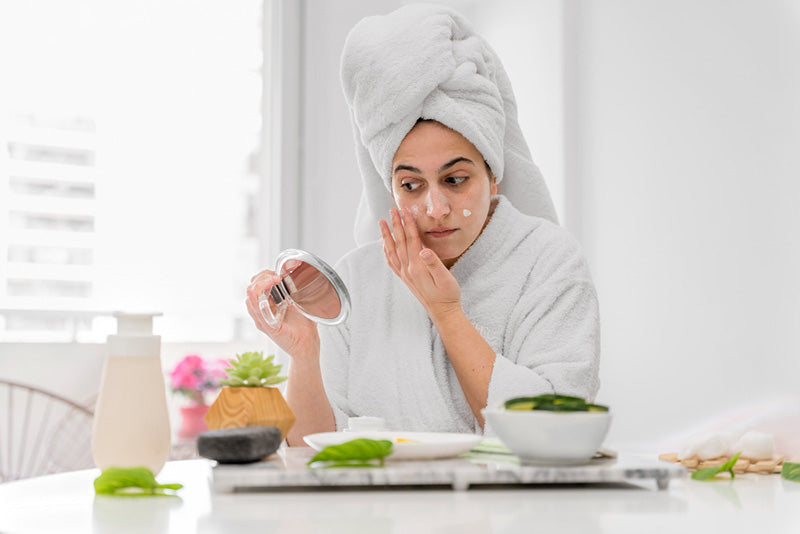How to Do a Patch Test to Prevent Skin Reactions?
As a beautician, ensuring your clients' safety and satisfaction is paramount. Understanding how to do a patch test is an essential skill that helps prevent adverse skin reactions from new products. This practice involves applying a small amount of a product to a client's skin to check for allergic reactions or sensitivities before a full application. In this guide, we'll explore the importance of patch testing, how to conduct one effectively, and tips for interpreting the results.

Why Patch Testing Matters
Patch testing is crucial in the beauty industry, particularly when introducing new products or treatments to clients. It serves as a safeguard against potential allergies or irritations that could lead to discomfort or more severe reactions. By taking the time to perform a patch test, you demonstrate professionalism and care for your clients' well-being.
Identifying Allergens and Irritants
A patch test helps identify specific allergens or irritants in a product. Common ingredients that may cause reactions include fragrances, preservatives, and certain active ingredients. By pinpointing these substances, you can make informed decisions about which products to use or avoid for each client.
Building Trust with Clients
Performing a patch test not only protects your clients but also builds trust. Clients appreciate the extra step taken to ensure their safety, which can enhance their overall experience and loyalty to your services.
Step-by-Step Guide to Performing a Patch Test
Step 1: Choose the Right Area
Select an area of skin that is discreet yet sensitive, such as behind the ear or inside the wrist. These areas are ideal because they are less likely to be exposed to other products or environmental factors that could affect the test results.
Step 2: Apply the Product
With clean hands or a cotton swab, apply a small amount of the product to the chosen area. Ensure that the area is clean and dry before application. Cover the test area with a small adhesive bandage to prevent the product from rubbing off.
Step 3: Wait and Observe
Instruct your client to leave the patch test in place for at least 24 hours. During this time, they should avoid washing the area or applying other products that could interfere with the test. Advise them to monitor the area for any signs of redness, itching, swelling, or other unusual reactions.
Step 4: Evaluate the Results
After 24 hours, remove the bandage and examine the test area. A clear, irritation-free area indicates that the product is likely safe to use. However, if any redness, itching, or swelling is present, it's best to avoid using the product on your client's entire face or body.
Communicating with Clients
Effective communication is key when conducting a patch test. Explain the process and its importance to your client, ensuring they understand why this step is necessary for their safety. Encourage them to share any known allergies or past reactions to similar products.
It's also helpful to provide clients with written instructions on how to monitor the test area at home. This proactive approach can prevent misunderstandings and reinforce your commitment to their well-being.
Additional Tips for Successful Patch Testing
Patch Testing for Different Skin Types
Consider each client's individual skin type and history. For instance, clients with sensitive skin may require a longer observation period or additional precautions during the patch test. Tailor your approach to suit their specific needs.
Documenting Patch Test Results
Maintain detailed records of each client's patch test results. This information can be invaluable for future reference and helps ensure consistent, safe practices in your beauty treatments.

Frequently Asked Questions
1. How long should a patch test be left on the skin?
A patch test should typically be left on the skin for 24 hours to accurately assess any potential reactions.
2. Can a patch test be done with makeup products?
Yes, patch testing can be performed with makeup products. Apply a small amount to a discreet area and follow the same observation process.
3. What should I do if a client has a reaction during the patch test?
If a client experiences a reaction, immediately remove the product and cleanse the area with mild soap and water. Advise them to avoid using the product and consider suggesting alternatives that do not contain the irritating ingredient.
For more information on maintaining healthy skin and understanding skin care basics, visit AAD's guide on skin care basics. Additionally, explore our other articles on skin care techniques, such as fixing uneven skin tone and choosing the best serums for dark spots.
This article contains affiliate links. We may earn a commission at no extra cost to you.

